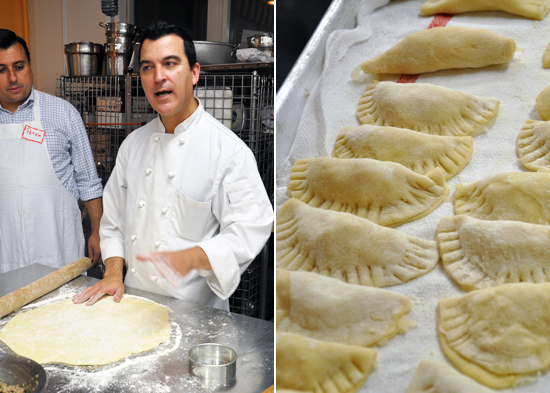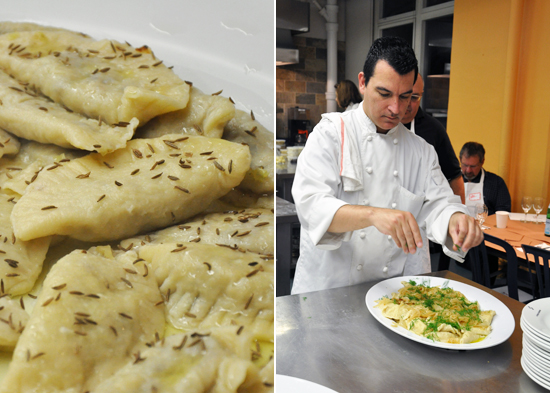Cultures the world over feast on dumplings in many shapes and sizes.
Eastern European food may not always be the most refined or elegant cuisine, but grandmothers from Moscow to Minsk definitely know how to make pierogi, hearty dumplings filled with substantial fillings like potato, cheese and cabbage. At ICE’s Pierogi Workshop with Daniel Rosati, we learned the basic of making a tender dough and a variety of satisfying fillings for pierogies.

The warm, satisfying dumplings are comfort food at its finest, as well as being surprisingly easy to make. Our class made eight different types of pierogi, including two dessert dumplings. Here are some tips I picked up along the way:
Baked, Not Fried: Russian piroshki are a baked meat-filled dumpling, a variation on the more popular steamed or sautéed pierogies that are more common in Poland or Ukraine.
The Top Tool: Use a ricer or food mill for delicate, fluffy mashed potatoes. A food processor will make gummy potatoes and a hand masher leaves potatoes too lumpy for pierogi filling.
A Level Head: When measuring dry ingredients, spoon the ingredient into the cup and then level it off using a flat spatula or bench scraper. This technique is more consistent than just scooping and dumping.
Slice Swiftly: An egg slicer is an easy and efficient way to slice mushrooms as well.
Less is More: When rolling dough, it is easier to work with a smaller amount of dough. You will have more control and be better able to get an even thickness throughout the rolled piece of dough.

Do you have a favorite dumpling you’d like to make at home? Check out the upcoming classes at ICE!



